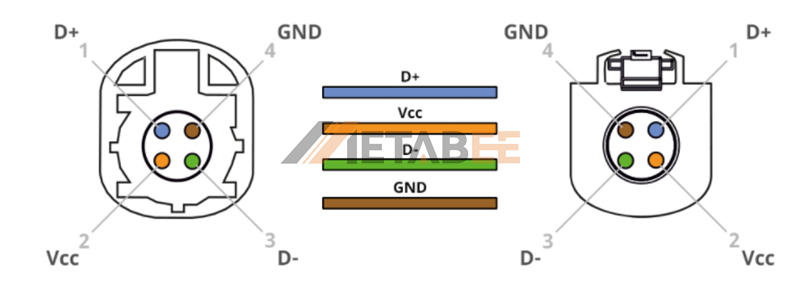HSD Male to HSD Female with Cable 1M
- Fulfill the demanding requirements of the automotive industry
- Prevents misuse due to secure coding system
- Primary and secondary locking systems lead to high assembling security
- Reliable and durable
- Multiple housings for space savings and for quick plug-in operations
- Stamped and formed variants for process-safe, fully automated assembly
Descriptions
Introduction to HSD Cable
The increasing adoption of telematics in the automotive industry is driving the need for high-speed data communication systems in vehicles. The HSD (High Speed Data) portfolio meets this demand.
HSD +2, +4, +8, and high-speed data connector systems up to 6 GHz are typically used in automotive applications. HSD interconnect products focus on automotive applications, such as internal compartments for connecting displays, hosts, and rear seat infotainment modules.
The product portfolio can use various protocols, such as LVDS (Low Voltage Differential Signaling), GVIF (Gigabit Video Interface), USB, IEEE 1394, and Ethernet protocols.
Specification
Features
HSD Plug and Jack in Schematic View with Pin Assignment


HSD stands for High Speed Data and is a 4-pin interface that can be used to create a shielded high-speed connection system. The interface is designed based on the "star-four principle, " meaning that the opposite wires form a wire pair.


Function of HSD
HSD +2, +4, +8 power pin connectors - more variants with additional pins (MQS contacts) for the power supply. Power supply by HSD (PoH) is the concept of remote power supply, e.g. for monitors, cameras or similar devices.
In addition to the data signal, the DC signal is transmitted on a separate conductor to power the end device.
Advantages of HSD
The HSD is a homogeneous impedance controlled interconnect system that directly addresses real-time automotive industry applications' high-speed data and low-voltage requirements. Extremely compact and rugged, this 100-ohm fully shielded interconnect system features a shielded twisted quad cable with mechanical keying and locking for high connection retention and code to avoid misuse.
Its high data throughput performance is also protected against interference from crosstalk and external sources, making the HSD cable and PCB connector system perfect for LVDS cameras, USB connections, Ethernet (IEEE 802.3), and Firewire (IEEE 1394) applications.


Applications
- Infotainment Modules
- Headend Units
- Cluster Displays
- Consumer Ports


